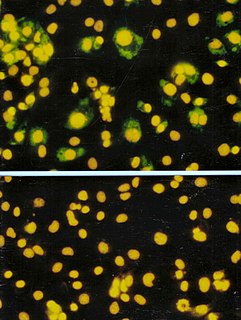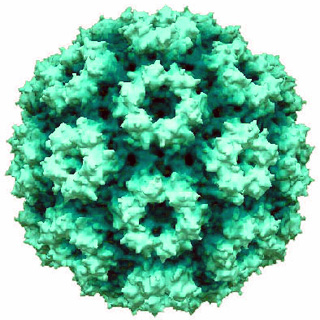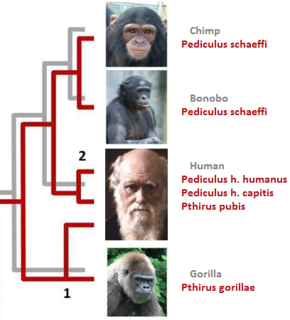This article has no lead section .(August 2021) |
This article has no lead section .(August 2021) |
Viruses are known to infect both plant cells and animal cells. Since viruses are obligate intracellular parasites they must develop direct methods of transmission, between hosts, in order to survive. The mobility of animals increases the mechanisms of viral transmission that have evolved, whereas plants remain immobile and thus plant viruses must rely on environmental factors to be transmitted between hosts.
The structural differences between plant and animal cells have resulted in a variety of transmission routes being exploited, enabling the virus to be passed between different host plants. The main difference, from the point of view of a virus, is the cell wall. This forms a tough barrier between the intracellular components and the extracellular environment, which has to be penetrated. These differences, combined with the fact that plants are immobile, have resulted in plant viruses relying on the wind and soil to transmit seeds as well as vectors. Vectors either transmit the virus propagative transmission, which results in an amplification of the virus by replication within the cells of the vector, or non-propagative transmission which simply carries the virus between the plants without viral replication. Common vectors include bacteria, fungi, nematodes, arthropods and arachnids.
Furthermore, human intervention, including grafting and experimental mechanical damage, physically damages the cell wall, contributes to the array of transmission routes. The virus commonly uses these methods to be passed from one host to another. However, the virus is dependent upon physical damage, generated naturally by the wind and feeding of vectors or by human intervention.
Viral infections often develop into systemic infections as a means of transmission. The virus often infects many tissues, if not the whole plant, where it can continue to replicate. There are a variety of methods the virus can use to spread throughout the organism but the most common route use the vascular system, otherwise known as the xylem and phloem, and the plasmodesmata, which interconnect adjacent cells.
Nevertheless, the rigidity of the cell wall of plant cells, not only poses a problem for transmission of the viruses between different plant hosts, but also acts to prevent viral transmission between cells. Consequently, the virus must modify the plasmodesmata as they, themselves, are too large to fit through the small and tightly regulated plant structure. There are again a variety of mechanisms used for this, which have evolved for different viruses. The main mechanisms involve expressing proteins which coat the virus and interact with the structure of the plasmodesmata. The array of proteins expressed by the different viruses may act differently but all achieve a similar goal, passage between adjacent cells.
Viral evolution is a subfield of evolutionary biology and virology that is specifically concerned with the evolution of viruses. Viruses have short generation times, and many—in particular RNA viruses—have relatively high mutation rates. This elevated mutation rate, when combined with natural selection, allows viruses to quickly adapt to changes in their host environment. In addition, most viruses provide many offspring, so any mutated genes can be passed on to many offspring quickly. Although the chance of mutations and evolution can change depending on the type of virus, viruses overall have high chances for mutations.
Cauliflower mosaic virus (CaMV) is a member of the genus Caulimovirus, one of the six genera in the family Caulimoviridae, which are pararetroviruses that infect plants. Pararetroviruses replicate through reverse transcription just like retroviruses, but the viral particles contain DNA instead of RNA.

Plant viruses are viruses that affect plants. Like all other viruses, plant viruses are obligate intracellular parasites that do not have the molecular machinery to replicate without a host. Plant viruses can be pathogenic to higher plants.

Geminiviridae is a family of plant viruses that encode their genetic information on a circular genome of single-stranded (ss) DNA. There are 520 species in this family, assigned to 14 genera. Diseases associated with this family include: bright yellow mosaic, yellow mosaic, yellow mottle, leaf curling, stunting, streaks, reduced yields. They have single-stranded circular DNA genomes encoding genes that diverge in both directions from a virion strand origin of replication. According to the Baltimore classification they are considered class II viruses. It is the largest known family of single stranded DNA viruses.
Viral pathogenesis is the study of the process and mechanisms by which viruses cause diseases in their target hosts, often at the cellular or molecular level. It is a specialized field of study in virology.

Successful infection of a plant by a plant virus depends on its ability to move from the cell initially infected to neighbouring cells in order to spread infection. Unlike animal cells, plant cells have robust cell walls, which viruses cannot easily penetrate. A movement protein is a non-structural protein which is encoded by some plant viruses to allow their movement from one infected cell to neighbouring cells. Many, if not all, plant viruses encode a movement protein, and some express more than one. The movement protein of tobacco mosaic virus (TMV) has been most extensively studied. Plant viruses can also be transported over longer distances through the host plant in the vascular system via the phloem.

Viral transformation is the change in growth, phenotype, or indefinite reproduction of cells caused by the introduction of inheritable material. Through this process, a virus causes harmful transformations of an in vivo cell or cell culture. The term can also be understood as DNA transfection using a viral vector.

A viroplasm, sometimes called "virus factory" or "virus inclusion", is an inclusion body in a cell where viral replication and assembly occurs. They may be thought of as viral factories in the cell. There are many viroplasms in one infected cell, where they appear dense to electron microscopy. Very little is understood about the mechanism of viroplasm formation.

Cowpea chlorotic mottle virus, known by the abbreviation CCMV, is a virus that specifically infects the cowpea plant, or black-eyed pea. The leaves of infected plants develop yellow spots, hence the name "chlorotic". Similar to its "brother" virus, Cowpea mosaic virus (CPMV), CCMV is produced in high yield in plants. In the natural host, viral particles can be produced at 1–2 mg per gram of infected leaf tissue. Belonging to the bromovirus genus, cowpea chlorotic mottle virus (CCMV) is a small spherical plant virus. Other members of this genus include the brome mosaic virus (BMV) and the broad bean mottle virus (BBMV).
Avipoxvirus is a genus of viruses within the family Poxviridae. Poxviridae is the family of viruses which cause the afflicted organism to have poxes as a symptom. Poxviruses have generally large genomes, and other such examples include smallpox and monkeypox. Members of the genus Avipoxvirus infect specifically birds. Avipoxviruses are unable to complete their replication cycle in non-avian species. Although it is comparably slow-spreading, Avipoxvirus is known to cause symptoms like pustules full of pus lining the skin and diphtheria-like symptoms. These diphtheria-like symptoms might include diphtheric necrotic membranes lining the mouth and the upper respiratory tract. Like other avian viruses, it can be transmitted through vectors mechanically such as through mosquitoes. There is no evidence that this virus can infect humans.
Luteovirus is a genus of viruses, in the family Tombusviridae. There are 13 species in this genus. Plants serve as natural hosts. The geographical distribution of Luteoviruses is widespread, with the virus primarily infecting plants via transmission by aphid vectors. The virus only replicates within the host cell and not within the vector. The name 'luteovirus' arises from the Latin luteus, which is translated as 'yellow'. Luteovirus was given this name due to the symptomatic yellowing of the plant that occurs as a result of infection.

Banana bunchy top virus (BBTV) is a plant pathogenic virus of the family Nanoviridae known for infecting banana plants and other crops.
Sweet potato feathery mottle virus (SPFMV) is a member of the genus Potyvirus in the family Potyviridae. It is most widely recognized as one of the most regularly occurring causal agents of sweet potato viral disease (SPVD) and is currently observed in every continent except Antarctica. The number of locations where it is found is still increasing; generally, it is assumed that the virus is present wherever its host is. The virus has four strains that are found in varying parts of the world.

A virus is a submicroscopic infectious agent that replicates only inside the living cells of an organism. Viruses infect all life forms, from animals and plants to microorganisms, including bacteria and archaea. Since Dmitri Ivanovsky's 1892 article describing a non-bacterial pathogen infecting tobacco plants and the discovery of the tobacco mosaic virus by Martinus Beijerinck in 1898, more than 9,000 virus species have been described in detail of the millions of types of viruses in the environment. Viruses are found in almost every ecosystem on Earth and are the most numerous type of biological entity. The study of viruses is known as virology, a subspeciality of microbiology.
In biology, a pathogen in the oldest and broadest sense, is any organism that can produce disease. A pathogen may also be referred to as an infectious agent, or simply a germ.
This glossary of virology is a list of definitions of terms and concepts used in virology, the study of viruses, particularly in the description of viruses and their actions. Related fields include microbiology, molecular biology, and genetics.

In parasitology and epidemiology, a host switch is an evolutionary change of the host specificity of a parasite or pathogen. For example, the human immunodeficiency virus used to infect and circulate in non-human primates in West-central Africa, but switched to humans in the early 20th century.

Tomato spotted wilt orthotospovirus (TSWV) is a spherical negative-sense RNA virus that has a diameter between 80-110 nanometers.
Carrot virus Y (CarVY) is a (+)ss-RNA virus that affects crops of the carrot family (Apiaceae), such as carrots, anise, chervil, coriander, cumin, dill and parsnip. Carrots are the only known crop to be infected in the field. Infection by the virus leads to deformed roots and discolored or mottled leaves. The virus is spread through insect vectors, and is currently only found in Australia.